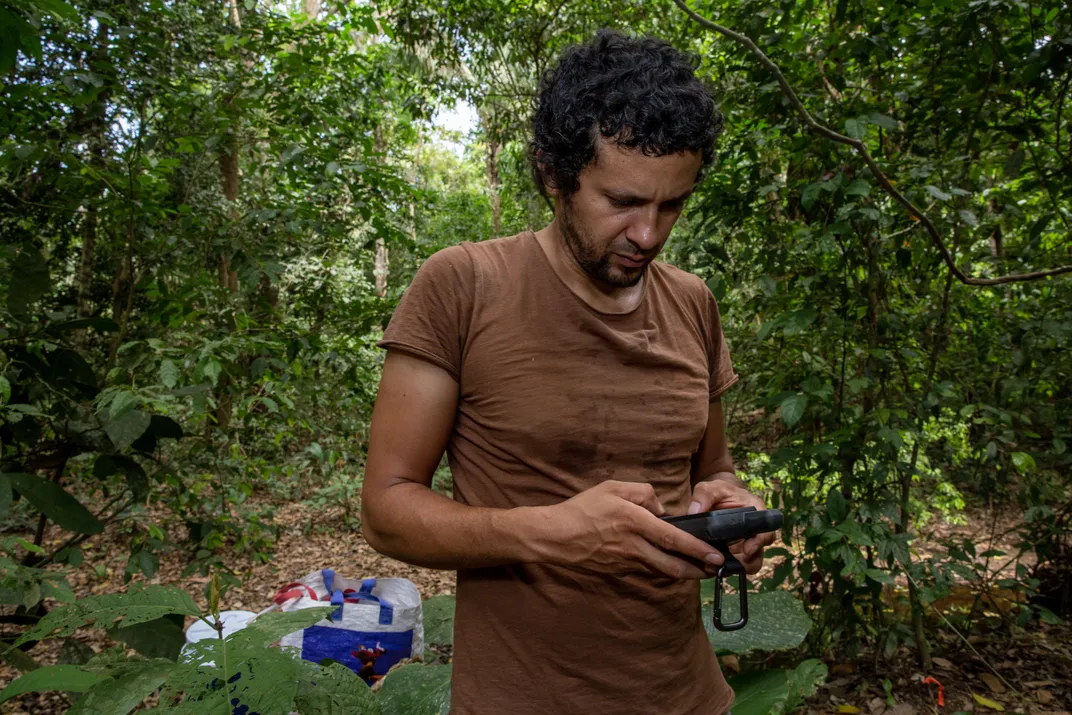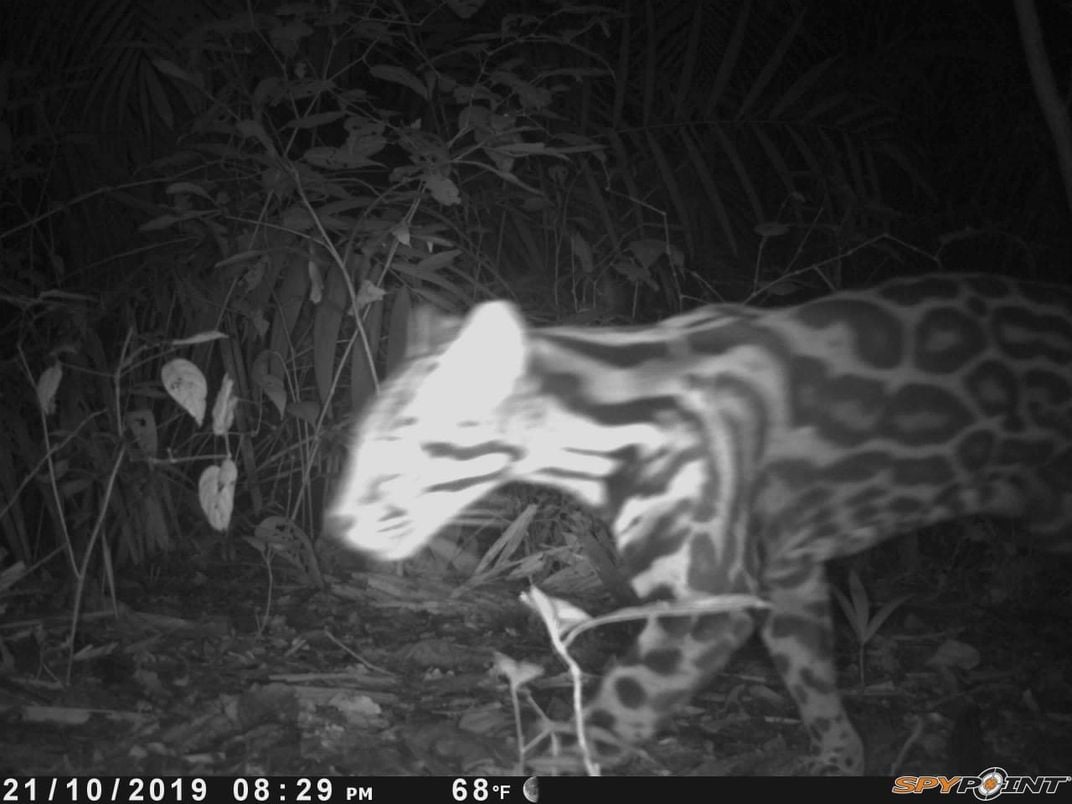SMITHSONIAN TROPICAL RESEARCH INSTITUTE
Smelly Ocelot Habitats May Scare Off Agoutis
These rodents seem less likely to snack in areas where ferocious felines have peed
/https://tf-cmsv2-smithsonianmag-media.s3.amazonaws.com/filer_public/1a/e3/1ae31a8b-2343-4e41-b6d1-5b0c9ffcee4d/bci_20190518_srp-095.jpg)
When going through stressful situations, some people lose their appetite. Similarly, animals that are scared for their lives tend to eat less. In nature, this behavioral change could have downstream effects. Dumas Galvez, a postdoctoral fellow at the Smithsonian Tropical Research Institute (STRI) wondered how fear of predation could influence the consumption patterns of important seed dispersers such as the Central American agouti, a rodent that loves munching on the seeds of Attalea butyracea, a tropical palm tree also known as corozo, palma real o palma de vino.
Agoutis are scared of big cats, and may detect their presence through smell. It helps that one of their main predators -ocelots- use their urine and feces to mark their home area. Hungry agoutis may pick up on this scent and avoid feeding in those sites. Galvez, alongside Marisol Hernandez, a biology student from the University of Panama, conducted various experiments in the Parque Natural Metropolitano (PNM) to test this hypothesis.

By tagging and monitoring Attalea butyracea seeds and with the support of camera traps, digital cameras that have sensors to detect passing animals, they first found that agoutis were less likely to disperse and pilfer seeds in sites perceived to have high ocelot density, especially during the rainy season when there is more food available. A second experiment with urine and feces of ocelots also found less dispersal by agouties when these cues were present. Their findings were recently published in the journal Behavioral Ecology.
Scientists study the observed behavioral changes in the agoutis associated with their perceived predation risk, the “ecology of fear”. These effects are likely to occur between other species of wild cats and seed-dispersing rodents. The reduced rates of seed dispersal and consumption associated with scared rodents may, in turn, help to maintain plant diversity in forest ecosystems.

“In the case of this palm species, seeds that remain on the ground are also attacked by bruchid beetles, so lower seed dispersal rates by agouties in ‘scary patches’ allows beetles to have a longer time frame to attack those seeds,” said Galvez. “Thus, ocelots may be indirectly benefiting other plants: the combined seed predation by agoutis and bruchid beetles reduces the possibility that A. butyracea dominates in the forest, allowing other plant species to flourish.”
Still, some questions remain to be addressed. For instance, are agoutis going hungry due to fear of predation or do they rely on other food sources in risky habitats? Further work may help resolve this mystery.

